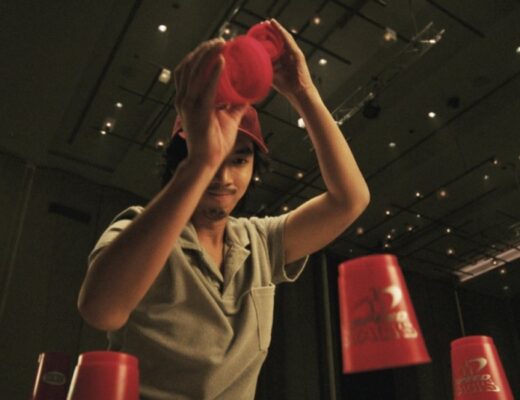The success of James Wan’s The Conjuring last year, like that of Paranormal Activity back in 2009, points to a wave of purely affective horror cinema, less concerned with feeding on social anxieties of their time than with crafting jump scares and a spooky atmosphere. In doing so, these films add up to little more than empty thrill rides that quickly fade once the movies end. So Annabelle, John R. Leonetti’s prequel to The Conjuring, theoretically has a leg up on Wan’s film in finding the root of its horror in social paranoia, though the concerns it depicts speak less to any anxieties in our current moment than those of the time it depicts, as the hippie backlash and fear of cultism of the late 1960s drive the action throughout. If only that was enough to elevate yet another tired, mechanical genre exercise.
It turns out that the creepy doll that haunted the Perron clan in The Conjuring is possessed by the spirit of Annabelle Higgins (Keira Daniels), the runaway flower-child daughter of a God-fearing family. When she returns home — just days after the Manson Family murdered Sharon Tate — she and her boyfriend murder her parents and attack their neighbors, pregnant Mia (Annabelle Wallis) and her husband John (Ward Horton). Things go awry and Annabelle’s spirit subsequently finds its way into one of Mia’s dolls. The expected haunted-house hijinks ensue.
Eye-roll-worthy patriarchal misogyny, combined with its stale shocks and dated cultism hullabaloo, confirms Annabelle as a film that has absolutely no reason to exist.
While The Conjuring similarly used a period setting, it smartly avoided drawing on historical details as a source of horror, allowing its scares to come off as timeless. Annabelle, though, insists on making repeated historical references without bothering to draw parallels to contemporary anxieties to possibly make its jolts resonate more broadly. There’s only so much references to Charles Manson and Satanic cultism can do without even a tenuous connection to the present to make it scarily relevant for current audiences.
Perhaps this wouldn’t have mattered if Leonetti had proven himself to be a halfway interesting genre filmmaker. Instead, he’s a much lamer imitator than even Wan has been in his recent “classical” phase — especially when he starts ripping off scares from Wan’s own films. An image of Mia being dragged by an invisible force as she tries to escape from a fiery kitchen recalls a memorable image from The Conjuringalmost exactly; later, when demons do take shape and waltz through the frame, Leonetti steals right from the Insidious playbook in the way he visualizes these dark apparitions, and they are just as laughable here as they were in that film. At least Wan exhibits patience in building up to his jump scares, however banal they may be. Leonetti, by contrast, throws shocks about willy-nilly and repeats effects to death: One sequence depicting Mia trapped in an elevator wears out its only moment of tension — the opening of the doors on the same floor — long past its initial effectiveness.
Beyond the film’s retrograde approach to horror, there’s also its taint of retrograde misogyny to deal with. It’s worth noting, in that regard, that the rash of hauntings the demons throw at Mia have a tendency to stop whenever her husband is around. Even the presence of another woman — Evelyn (Alfre Woodard), less a character than a racist trope, one who happily sacrifices herself in service to the white couple — never deters the ghouls. Once the patriarch shows up, however, Mia is safe for the moment, able to take shelter in her husband’s arms. This bit of eye-roll-worthy patriarchal misogyny, combined with its stale shocks and dated cultism hullabaloo, confirms Annabelle as a film that has absolutely no reason to exist, a bill of goods sold decades after its expiration date.








No Comments